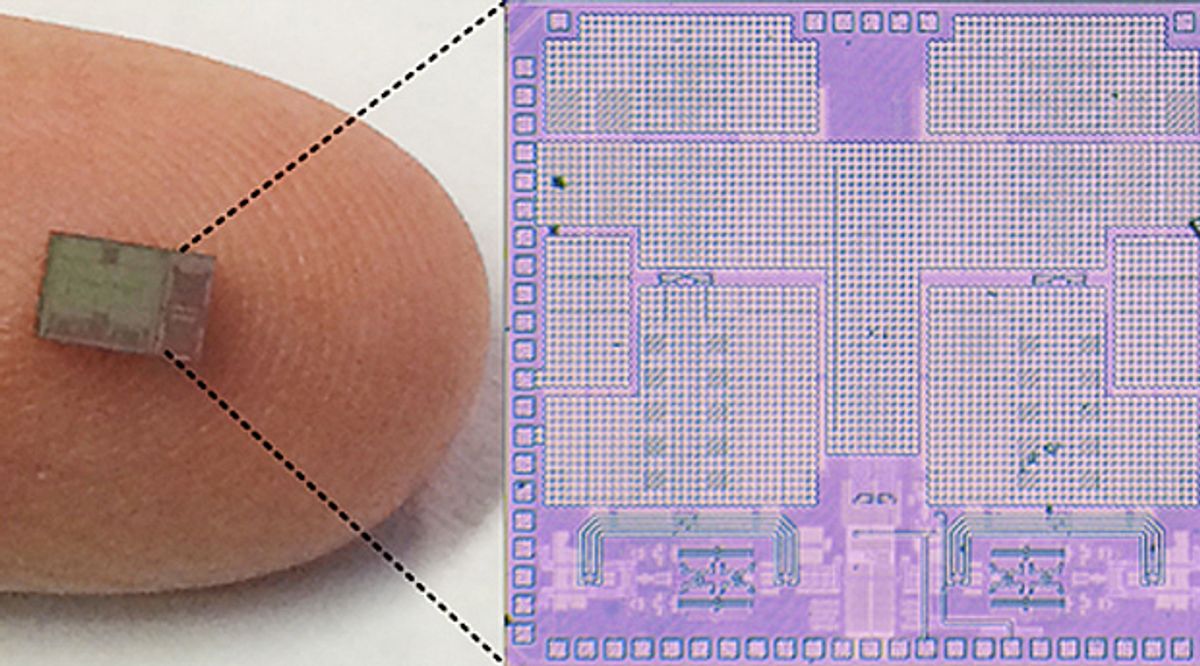A new microchip could double the amount of data one can transmit and receive wirelessly by enabling simultaneous transmission and reception on the same radio frequency, engineers at Columbia University say.
This advance could not only improve portables and WiFi networks, "but this could also ease up the frequency spectrum as well," says Harish Krishnaswamy, an assitant professor of electrical engineering at Columbia University, in New York City.
Normally radio transmitters and receivers either work at different times or at the same time but on different frequencies. What so-called "full-duplex radios" instead try to do "is to transmit and receive at the same time and the same frequency," Krishnaswamy says. "This essentially can double the data capacity of a wireless network."
The biggest difficulty that full-duplex radios face is what is called transmitter echo or transmitter self-interference. "If you can imagine that a transmitter and receiver either share the same antenna or have two antennas very close to each other, the receiver mostly hears what the transmitter is transmitting," Krishnaswamy explains. "The signal from the transmitter can be anywhere from 1 billion to 1 trillion times more powerful than the signal you are trying to receive from whoever is trying to transmit to you from far away."
The new device, which they presented last month at the International Solid-State Circuits Conference, relies on canceling out transmitter echo. "The idea of echo cancellation is not new, but it's very challenging," Krishnaswamy says. "You're trying to cancel out a very powerful signal, and that signal can also bounce off the environment, so you have to account for how that signal might look reflected off nearby objects."
Past echo-cancellation technologies could be large and bulky. "Our innovation is to do it with an nano-scale integrated circuit that we have actually implemented in a CMOS microchip that can fit in a mobile device," he says.
The researchers developed an echo-cancellation system that relies on filters that can be dynamically reconfigured to account for how nearby objects in a changing environment might reflect signals. "We've shown that we can transmit and receive at the same time," Krishnaswamy says. "Now we're doing work to see if this can actually double network capacity. Network protocols will have to be redesigned—we have to see how exactly wirless networks behave when individual nodes can transmit and receive simultaneously."
The researchers are now working on testing their system with a Wi-Fi network. "We've gotten a lot of interest from significant players in the wireless space in development," Krishnaswamy says.
Charles Q. Choi is a science reporter who contributes regularly to IEEE Spectrum. He has written for Scientific American, The New York Times, Wired, and Science, among others.



